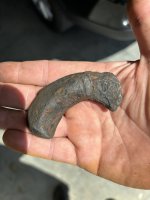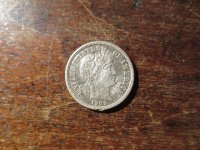BamaBill
Hero Member
- Nov 8, 2006
- 686
- 16
- Detector(s) used
- Minelab X-terra 70, AT Pro, Tesoro Tejon, ML X-terra 50
- Primary Interest:
- Relic Hunting
With the talk of heavily mineralized soil in the detecting forums got me to wondering. How do you check to see just how mineralized your soil is? Are there any on-line sources that can give you an idea of how mineralized different areas are? Seems to me it would be useful if you're travelling somewhere to do some detecting and don't know what you're in for.
Upvote
0







